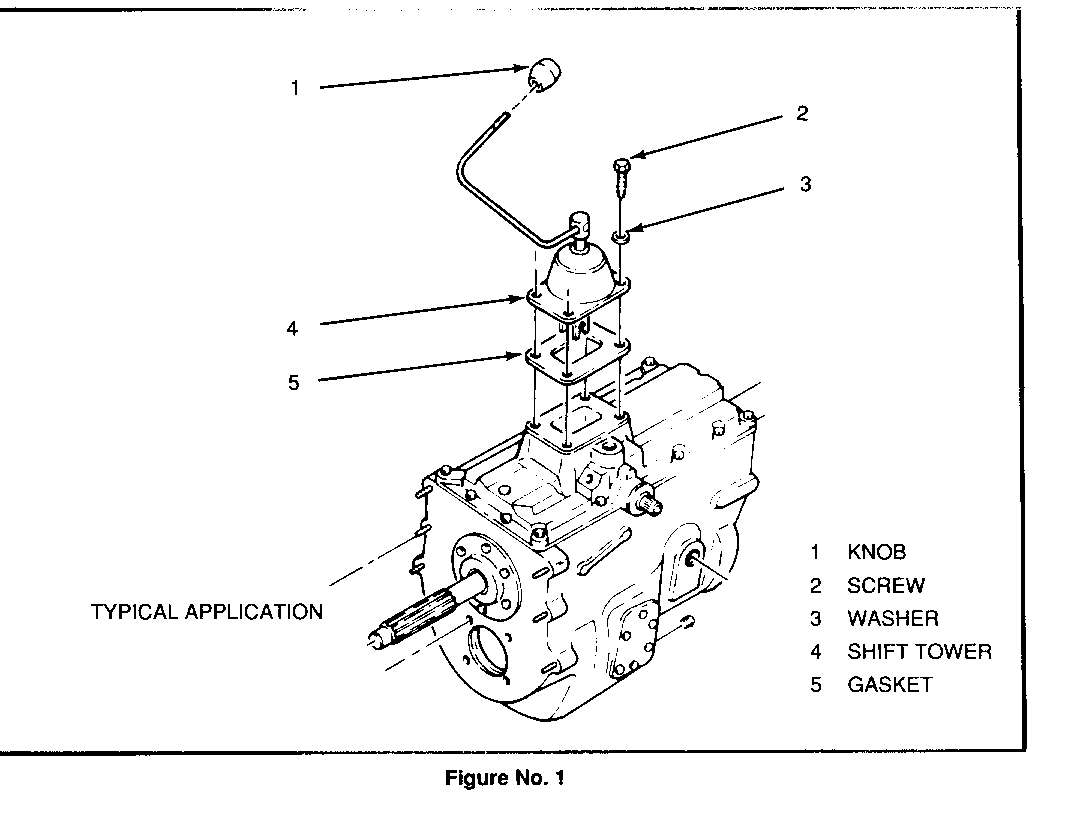TRANS HARD SHIFT CONDITION NEW SHIFT LEVER ASSY.

SUBJECT: TRANSMISSION DIFFICULT TO SHIFT (INSTALL NEW SHIFT TOWER ASSEMBLY)
VEHICLES AFFECTED: 1988-89 C7 MEDIUM DUTY TRUCKS WITH FULLER FS-5106 (R.P.O. IMXS) OR FS-6106 (R.P.O. MZT) TRANSMISSIONS
Some medium duty, C7 trucks equipped with the above options may experience a transmission hard shift condition between all gears, resulting in poor gear engagement into first or reverse.
The hard shift condition can occur because of the lower mechanical advantage of a high (5-1/2") shift lever housing tower design (distance from base of shift tower to top of shift tower) (GM P/N 2060183). The high shift lever housing tower has a close shift pattern that can make it difficult to obtain gear engagement. A lower shift housing tower opens the shift pattern area and provides additional leverage for easier shifting.
To alleviate this condition, a new shift lever assembly which utilizes a lower height (3-1/8") shift lever housing/tower can be installed.
Below is a list of parts required to make this modification and the Shift Lever Housing Tower Assembly Removal and Replacement Procedure. These parts are expected to be released in production with the Start of 1990 Model Production.
PARTS REQUIRED:
PART NUMBER DESCRIPTION QUANTITY ----------- ----------- -------- 15652494 Lever Assembly (Tower and Lever) 1 708686 Gasket 1 12345382 Loctite(R) 242 Threadlocker 1
REMOVAL AND REPLACEMENT PROCEDURE: (Refer to Figure 1)
IMPORTANT: This condition can also occur when clutch drag or improper release exists due to incorrect clutch adjustment or internal problems within the clutch or transmission. Verify the clutch adjustments per manufacturer's specifications. If not correct, make the necessary adjustments prior to performing the following Shift Lever Housing Tower Assembly Removal and Replacement Procedure.
1. Block the vehicle wheels to prevent movement.
2. Disconnect the negative battery cable.
3. Place the transmission gearshift lever in neutral.
4. Remove the lever knob.
5. Remove the floor mat and transmission cover (floor pan).
6. Remove the four shift lever tower capscrews and remove the gearshift lever and tower assembly from the shift bar housing and discard.
7. Remove the shift lever tower gasket and discard. Replace using new gasket, P/N 708686.
8. Install new shift lever housing tower assembly using the four capscrews previously removed. Apply Loctite (R) 242 Threadlocker, or equivalent, and torque the capscrews to 30 to 40 Lbs/Ft (41 to 54 Nm).
9. Install the floor mat and transmission cover (floor pan).
10. Install the lever knob.
11. Reconnect the negative battery cable.
12. Remove the wheel blocks.
13. Road test the vehicle.

General Motors bulletins are intended for use by professional technicians, not a "do-it-yourselfer". They are written to inform those technicians of conditions that may occur on some vehicles, or to provide information that could assist in the proper service of a vehicle. Properly trained technicians have the equipment, tools, safety instructions and know-how to do a job properly and safely. If a condition is described, do not assume that the bulletin applies to your vehicle, or that your vehicle will have that condition. See a General Motors dealer servicing your brand of General Motors vehicle for information on whether your vehicle may benefit from the information.
